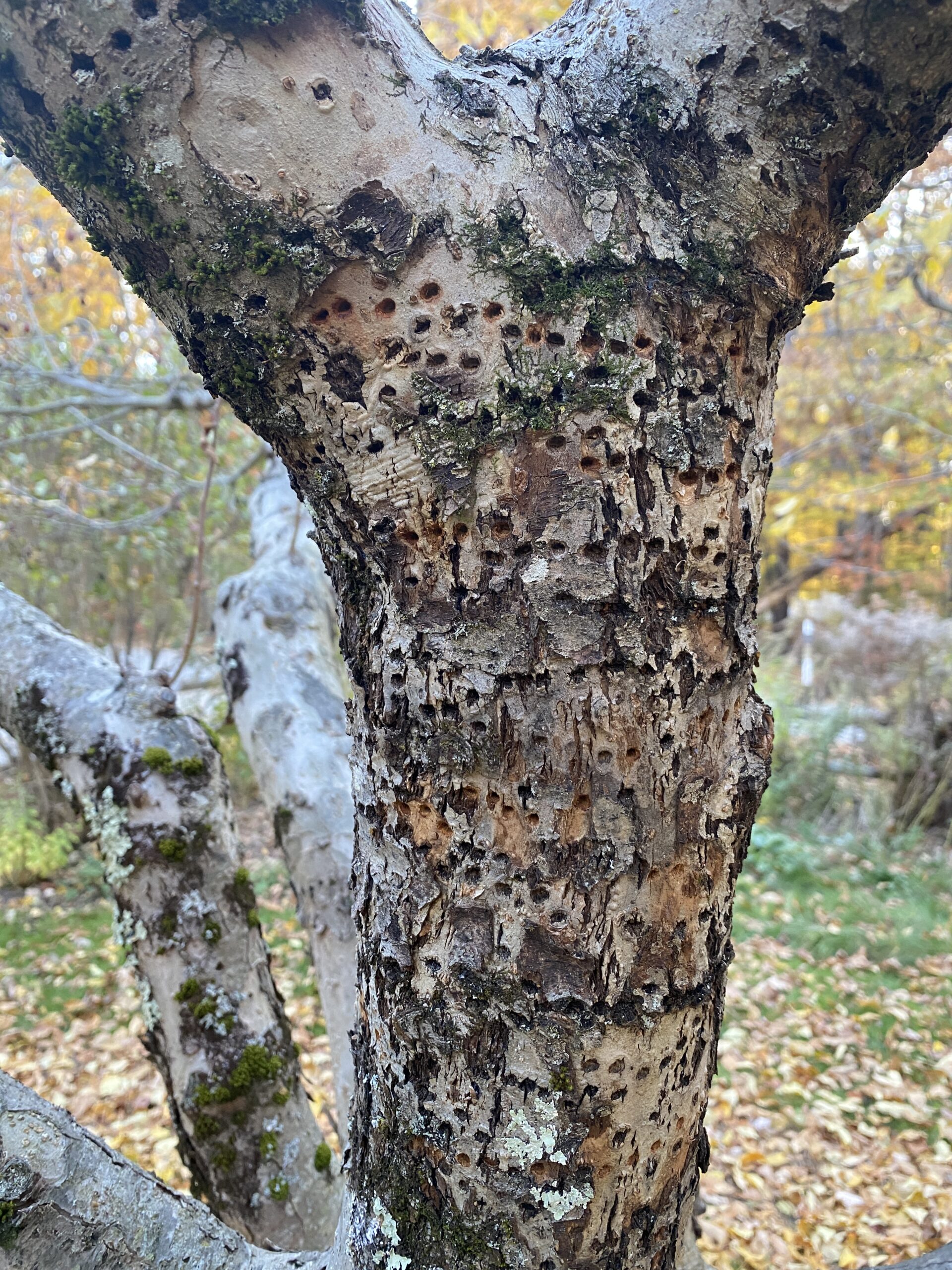Friday, October 25, 2024
We are in the midst of our Second Summer, a long stretch of warm weather following the first killing frost on October 17th. The pleasantly warm weather is a gift of time to continue fall gardening and meadow maintenance. We added our own compost and Pro Gro to two raised beds in preparation for planting garlic, raked and mulched leaves, adding some to the idle garden beds for winter cover, and began trimming back the meadow.
The late afternoon sun bathes our front yard. The crabapple, mostly bare, its trunk poked with rows of sapsucker holes, is visited by migrating and local birds. It offers safe cover, insects in abundance, and perching sites in proximity to the bird bath. Recent warm days have attracted a small flock of bluebirds (they take turns splashing in the bird bath) and handfuls of yellow-rumped warblers, juncos, and white-throated sparrows. Also two hermit thrushes.
The late season red raspberry patch is showing signs of drought, the berries small and dry. A few are plump, just enough for our morning granola. The plants are still producing flowers and fruits, attracting late season pollinators, including male eastern bumble bees. They often rest completely still on a flower. I’m not sure if they are feeding or just resting as they near end of life, before winter sets in.
Other insect foragers visit the raspberries. Yellow jackets favor the fruits and flowers. After I looked at the following photo, I noticed what looks like a mosquito in the lower left corner. A downside of warmer weather is that pesky insects continue to thrive.
We enjoy what some might call an imperfect or messy yard. We leave the leaves scattered in the lawn (no leaf blower here!). Many of the perennials with seed heads still attached will remain standing throughout winter, giving sustenance and homes to birds, insects, and spiders. Fallen leaves are left (or added to) among the shrubs and trees, as cover for overwintering invertebrates, to add nutrients and maintain soil moisture, and protect roots against the winter cold. To me, our yard looks healthy and is full of life.



